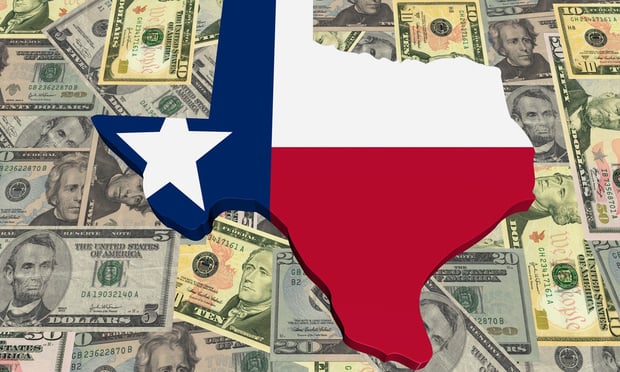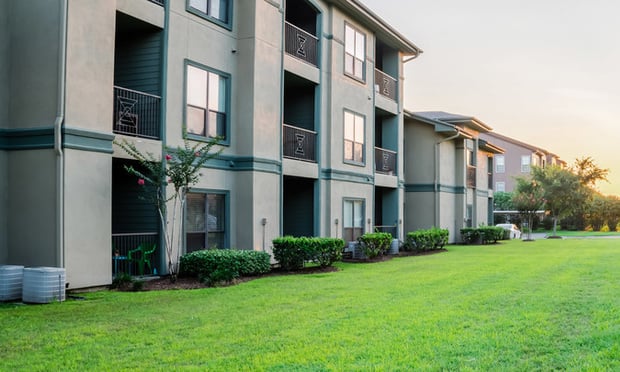CARROLLTON, TX-Despite the less-than-impressive economic recovery, US apartment fundamentals improved significantly during the third quarter, according to MPF Research’s most recent data. Occupancy rates and effective rents in US apartments continued to climb sharply during the third quarter, according to preliminary results from the firm’s third quarter survey.
National apartment occupancy now is up to 93.9%, an increase of .5% from the second quarter and 2.1% since bottoming at the end of 2009. Meanwhile, effective rents have increased by 1.2% from mid-2010 and 2.6% year-to-date.

"The gains are much stronger than what we forecast and what anyone forecast,” says Greg Willett, MPF Research's vice president of research and analysis. “The most optimistic forecast at the beginning of the year is that occupancy and rent growth would be flat, and we’ve blown that away.”
Although sluggish employment growth has triggered only mild new household formation, apartments are capturing a disproportionately large share of total housing demand, Willett points out. “Interestingly, modest economic growth is good for the apartment industry because it creates some new households, but it doesn’t generate consumer confidence that would result in homebuying,” he tells GlobeSt.
Moreover, MPF Research has found that apartment owners and managers have noted an increase in tenant retention. “When I talk with operators, they say tenant retention is 10 to 20% higher today than the historical norm,” Willett points out. “When people don’t feel confident, the easiest decision is to just stay put.”
Willett adds: “Apartments are certainly not losing renters to homeownership, whether that’s because they can’t quality for a mortgage, they don’t have the confidence in the economy or they’re not sure housing pricing have bottomed… there could be a lot of reasons they’re not buying, but it’s clear that they’re not, and that works in favor of apartments.”
At the same time that demand is surging, deliveries are slowing – another reason why occupancy and rents are increasing, Willett notes. MPF Research indicates that demand for 68,000 units was posted during the third quarter, and year-to-date absorption has totaled 283,000 units, one of the most robust tallies recorded during the past two decades.
Apartment stock additions during the 3rd quarter were limited to about 12,000 units, and new supply finished during the initial nine months of the year was held to approximately 48,000 units. “When you’re adding so few units, you don’t have to lease a huge number to get occupancy to go up,” Willett explains.
With occupancy on the rise, apartment owners have been able to increase rents. “In past cycles, as things started to get better with occupancy, operators were hesitant to push rents,” Willett recalls. “This time around, they just jumped right in with the increases.”

Roughly 75% of the 64 markets that MPF Research monitors reported rent increases this year. The remaining markets saw rents stabilize.
The nation's strongest rent growth during the past year has occurred in El Paso, TX, where rates are up 11.7%. Markets including Albuquerque, N.M., Baltimore, Miami, New York, Pittsburgh, PA, San Jose, CA, Washington D.C. and West Palm Beach, FL, saw year-over-year pricing increases in the range of 4% to 5%.
“Baltimore and D.C. are the markets that are closest to full recovery – back to where we were in 2007,” Willett notes. “That’s not all that surprising since they didn’t take that much of a hit. But there are markets that did take a meaningful hit that have recovered nicely: Portland, OR; Nashville and Denver.”
On the flip side, Las Vegas is the one spot still suffering a notable decline, with rents off 6.3% in early September compared to the same time last year. Dips near 1% remain in place in Atlanta, Houston, Phoenix, Salt Lake City, Seattle and Tampa, FL.
Even in markets where rental growth has been unimpressive, concessions are starting to burn off, Willett says. “Not only has the use of concessions dropped a whole lot, but the size of the concessions also is coming down,” he notes. “Earlier this year, we could have seen more than a month of free rent. Now were down to two weeks or a month at most.”
Want to continue reading?
Become a Free ALM Digital Reader.
Once you are an ALM Digital Member, you’ll receive:
- Breaking commercial real estate news and analysis, on-site and via our newsletters and custom alerts
- Educational webcasts, white papers, and ebooks from industry thought leaders
- Critical coverage of the property casualty insurance and financial advisory markets on our other ALM sites, PropertyCasualty360 and ThinkAdvisor
Already have an account? Sign In Now
*May exclude premium content© 2025 ALM Global, LLC, All Rights Reserved. Request academic re-use from www.copyright.com. All other uses, submit a request to [email protected]. For more information visit Asset & Logo Licensing.








